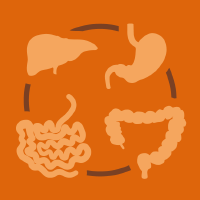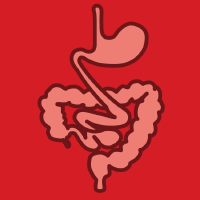Topic Menu
► Topic MenuTopic Editors




Inflammation and Fibrosis in Digestive Diseases
Topic Information
Dear Colleagues,
Inflammation and fibrosis are associated with the development and progression of immune-mediated digestive diseases, such as various kinds of hepatitis, liver fibrosis, inflammatory bowel diseases, reflux esophagitis, as well as liver and intestinal tumorigenesis. These digestive diseases are becoming a heavy burden worldwide, and therefore, a better understanding of pathogenesis and the identification of novel treatment strategies are urgently needed. Recent studies have proposed that several factors in the process of triggering and resolutions of inflammation and fibrosis are potential new therapeutic targets. However, the underlying mechanisms involved in the crosstalk between inflammation and fibrosis with digestive disease pathogenesis are far from clear. In this Special Issue, we focus on the inflammation and fibrosis aspect of pathogenesis mechanisms and treating digestive diseases. Both original research and review articles on clinical or basic studies are welcome.
The specific areas include:
(1) The roles of inflammation and fibrosis in the initiation, progression, and treatment of digestive diseases;
(2) Crosstalk between inflammation and fibrosis in the pathogenesis process of digestive diseases;
(3) Novel diagnostic biomarkers and therapeutic targets for anti-inflammation or anti-fibrosis therapy for digestive diseases;
(4) New therapeutic strategies of the combination of inflammation and fibrosis resolution in digestive disease treatment.
Prof. Dr. Xingxin Wu
Dr. Toshimi Chiba
Dr. Jie Yan
Dr. Emanuele Sinagra
Topic Editors
Keywords
- digestive diseases
- inflammation
- fibrosis
- resolution
- therapy
Participating Journals
| Journal Name | Impact Factor | CiteScore | Launched Year | First Decision (median) | APC |
|---|---|---|---|---|---|

Gastroenterology Insights
|
2.9 | 2.7 | 2009 | 32.6 Days | CHF 1600 |

Life
|
3.2 | 2.7 | 2011 | 17.5 Days | CHF 2600 |

Gastrointestinal Disorders
|
0.7 | 1.8 | 2019 | 21.3 Days | CHF 1200 |

MDPI Topics is cooperating with Preprints.org and has built a direct connection between MDPI journals and Preprints.org. Authors are encouraged to enjoy the benefits by posting a preprint at Preprints.org prior to publication:
- Immediately share your ideas ahead of publication and establish your research priority;
- Protect your idea from being stolen with this time-stamped preprint article;
- Enhance the exposure and impact of your research;
- Receive feedback from your peers in advance;
- Have it indexed in Web of Science (Preprint Citation Index), Google Scholar, Crossref, SHARE, PrePubMed, Scilit and Europe PMC.

